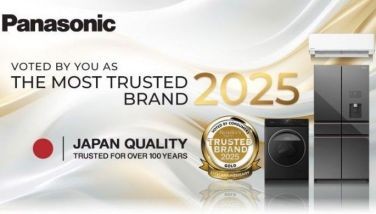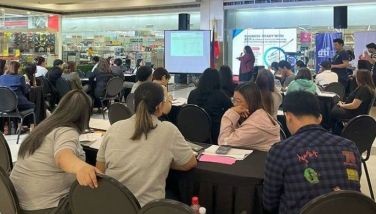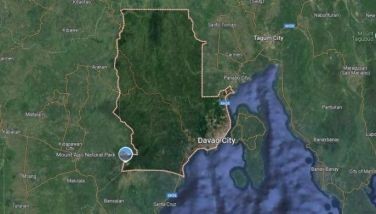Government losing P64B/year due to tax leakages
April 9, 2007 | 12:00am
The government is losing at least P64 billion a year in revenues from the leakages in customs tax and tariff collections due to technical smuggling from the country’s major trading partners.
A new study disclosed that from 2000 to 2005, estimated revenue losses were huge with over P79 billion in tariffs and close to P176 billion in value-added taxes for a grand total of P255 billion or P64 billion a year.
In a study commissioned by the Department of Finance (DOF) and conducted by the Center for Research and Communications (CRC), it was found out that there had been a dramatic decline in the value and rate of collections leakage during the period in review but the losses remained huge.
According to the study, the top sources of leakages have also shifted from the west to Asian countries such as Japan, China, Hongkong, Singapore, South Korea, Taiwan, Thailand and Indonesia.
The study only covered technical smuggling which involved the use of fraud to bring in goods through legitimate ports. The study said that although this was less dramatic than outright smuggling, the impact on revenue collection was still huge.
The CRC study said the losses were made even more significant by the fact that the Bureau of Customs accounted for about 19 percent of total government revenues.
The study showed that the leakage rate had peaked in 2000 with 35.9 percent of the total Philippine-reported imported figures. This has since dropped to 30.2 percent in 2001, 14.4 percent in 2002, 19.2 percent in 2003 and 16.1 percent in 2004.
By 2005, the study said the leakage rate had plummeted to only 5.1 percent although this number was expected to change pending the release of the latest information.
The study explained that to help increase its collection, the BOC routinely distinguishes the countries whose recorded exports to the Philippines were inconsistent with the accounted imports of the country.
"Discrepancies between the Philippines and her partner country are indicative of unrecorded importation activities or leakages," the study explained.
The study concluded that the biggest leakage was still between the country and Japan, with estimated revenue losses of $1.5 billion a year. The products most prone to technical smuggling had been electronics.
However, the study revealed that Japan fell from the top of the list in 2005 due mainly to the 40 percent drop in leakages in the electronics sector.
On the other hand, the US and Ireland were replaced in second and third by China and Hong Kong whose surging exports to the Philippines vaulted them to the top five countries where leakages were highest.
The study showed that leakages from China were highest in consumer goods such as apparel, plastics, footwear and photo equipment as well as durables such as vehicles and metals.
A new study disclosed that from 2000 to 2005, estimated revenue losses were huge with over P79 billion in tariffs and close to P176 billion in value-added taxes for a grand total of P255 billion or P64 billion a year.
In a study commissioned by the Department of Finance (DOF) and conducted by the Center for Research and Communications (CRC), it was found out that there had been a dramatic decline in the value and rate of collections leakage during the period in review but the losses remained huge.
According to the study, the top sources of leakages have also shifted from the west to Asian countries such as Japan, China, Hongkong, Singapore, South Korea, Taiwan, Thailand and Indonesia.
The study only covered technical smuggling which involved the use of fraud to bring in goods through legitimate ports. The study said that although this was less dramatic than outright smuggling, the impact on revenue collection was still huge.
The CRC study said the losses were made even more significant by the fact that the Bureau of Customs accounted for about 19 percent of total government revenues.
The study showed that the leakage rate had peaked in 2000 with 35.9 percent of the total Philippine-reported imported figures. This has since dropped to 30.2 percent in 2001, 14.4 percent in 2002, 19.2 percent in 2003 and 16.1 percent in 2004.
By 2005, the study said the leakage rate had plummeted to only 5.1 percent although this number was expected to change pending the release of the latest information.
The study explained that to help increase its collection, the BOC routinely distinguishes the countries whose recorded exports to the Philippines were inconsistent with the accounted imports of the country.
"Discrepancies between the Philippines and her partner country are indicative of unrecorded importation activities or leakages," the study explained.
The study concluded that the biggest leakage was still between the country and Japan, with estimated revenue losses of $1.5 billion a year. The products most prone to technical smuggling had been electronics.
However, the study revealed that Japan fell from the top of the list in 2005 due mainly to the 40 percent drop in leakages in the electronics sector.
On the other hand, the US and Ireland were replaced in second and third by China and Hong Kong whose surging exports to the Philippines vaulted them to the top five countries where leakages were highest.
The study showed that leakages from China were highest in consumer goods such as apparel, plastics, footwear and photo equipment as well as durables such as vehicles and metals.
BrandSpace Articles
<
>
- Latest
- Trending
Trending
Latest
Trending
Latest
Recommended




























